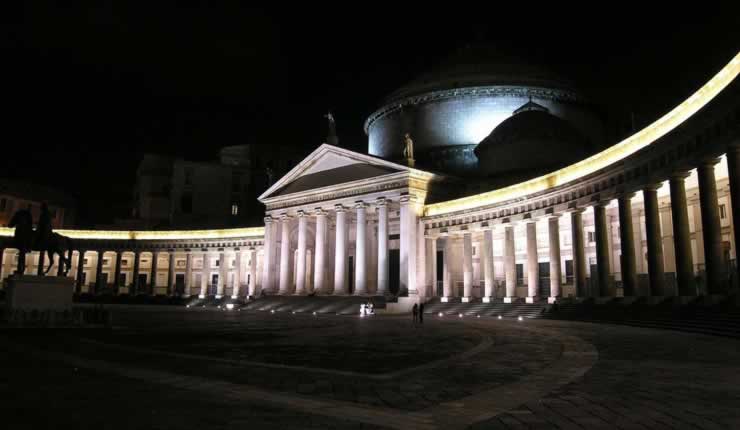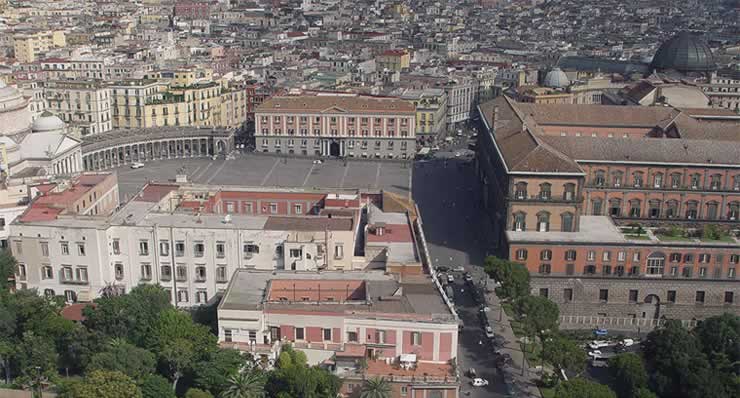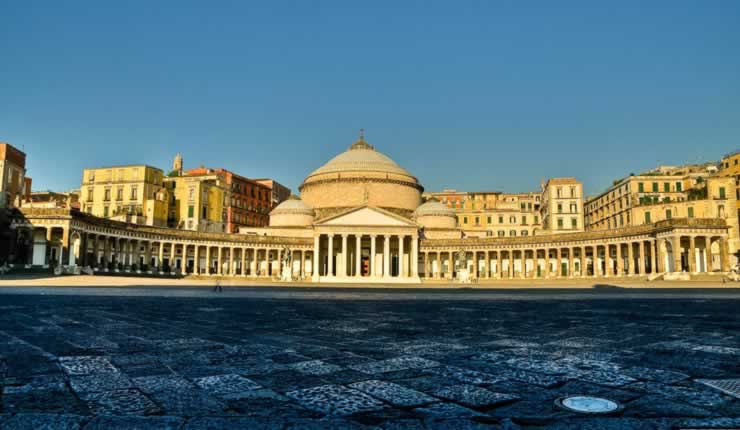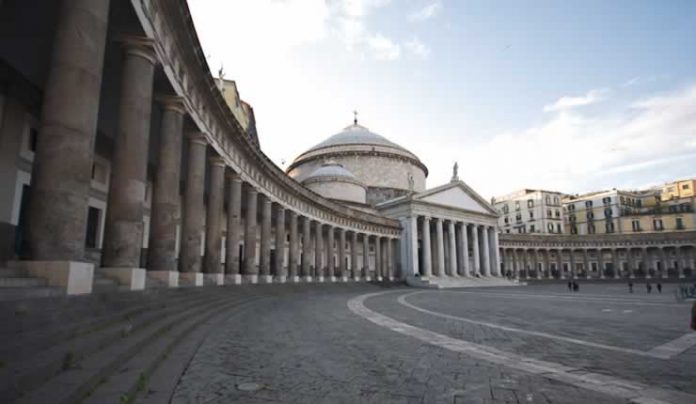Naples, a city enchanted by its millennia of history, vibrant culture, and traditions, harbors in its heart a square that embodies the spirit and beauty of this metropolis more than any other: Plebiscito Square. Located in the historic heart of the city, Plebiscito Square is not just a meeting place for citizens and tourists, but also a silent witness to historical and cultural events that have marked the history of Naples and Italy.


History of Plebiscito Square
Plebiscito Square intertwines its history with that of the Kingdom of Naples. Its name derives from the plebiscite of 1860, which marked the annexation of the Kingdom of the Two Sicilies to the Kingdom of Italy. The square has witnessed the construction of some of the city’s most important buildings. Like the Royal Palace and the Basilica of San Francesco di Paola, which outline the square’s perimeter and define its architectural profile.
Plebiscito Square is one of Italy’s largest squares, with a semi-circular shape opening towards the Royal Palace. The Basilica of San Francesco di Paola, with its imposing façade and columns reminiscent of the Pantheon in Rome, dominates the opposite side of the square. The equestrian statues of Charles III of Bourbon and Ferdinand I, located on the sides of the square, complete this magnificent setting.

Curiosities
A fascinating curiosity is the challenge of “walking blindfolded” through the two horses of the equestrian statues. It is said that only true Neapolitans can succeed in this endeavor, requiring perfect knowledge of the square’s space.
In conclusion, Plebiscito Square is not just an unmissable destination for those visiting Naples, but a place that tells stories, traditions, and the vibrancy of a unique city. Every stone, every building, every corner of this square has something to narrate, making it a mandatory stop to fully understand the spirit and history of Naples.
What to see and do in Plebiscito Square
- Royal Palace: A tour inside the Royal Palace allows visitors to discover the history of the Neapolitan monarchy and admire artworks and historical furnishings.
- Basilica of San Francesco di Paola: Entering the basilica, visitors can appreciate the imposing dome and the numerous artworks that adorn the interior.
- Events and Concerts: Plebiscito Square often hosts cultural events, concerts, and demonstrations, turning it into a vibrant activity center.
- Gastronomic Experience: In the surroundings of the square, numerous cafes and restaurants offer the opportunity to taste traditional Neapolitan cuisine.
- View on Google Maps
- Distance 700 meters from Toledo Metro Station
